
TVS Apache RTR 160 4V vs Bajaj Pulsar N160 Real-world Comparison...
- Sep 3, 2022
- Views : 23976

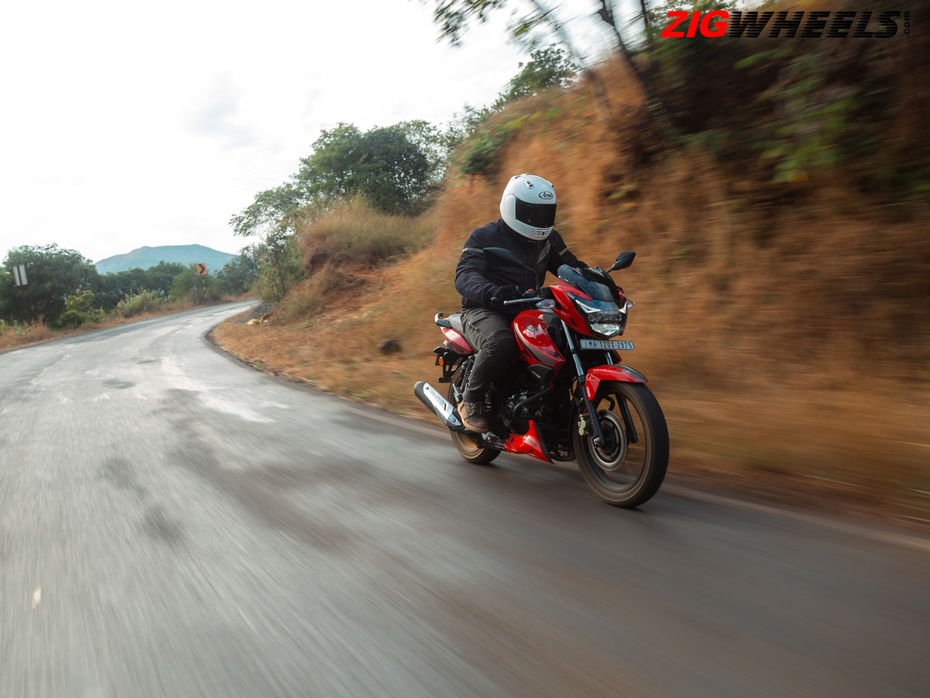
Recently we were out testing both the new TVS Apache RTR 160 2V and the Bajaj Pulsar P150. After several hours on the saddle, I turned to Manaal and said, “I think, after all these years in service, the Pulsar had to grow up, but the Apache chose to age well.”
Almost 15 years later, and many bikes since, this small 160cc bike from TVS still puts a smile on my face. I’ve ridden it in its rawest and now at its cleanest (BS6) forms and I still love it. But, it would be foolish to overlook its most inherent weakness because of which, the RTR 160 2V may go down as an underrated, yet fun bike on sale today, and here’s why.
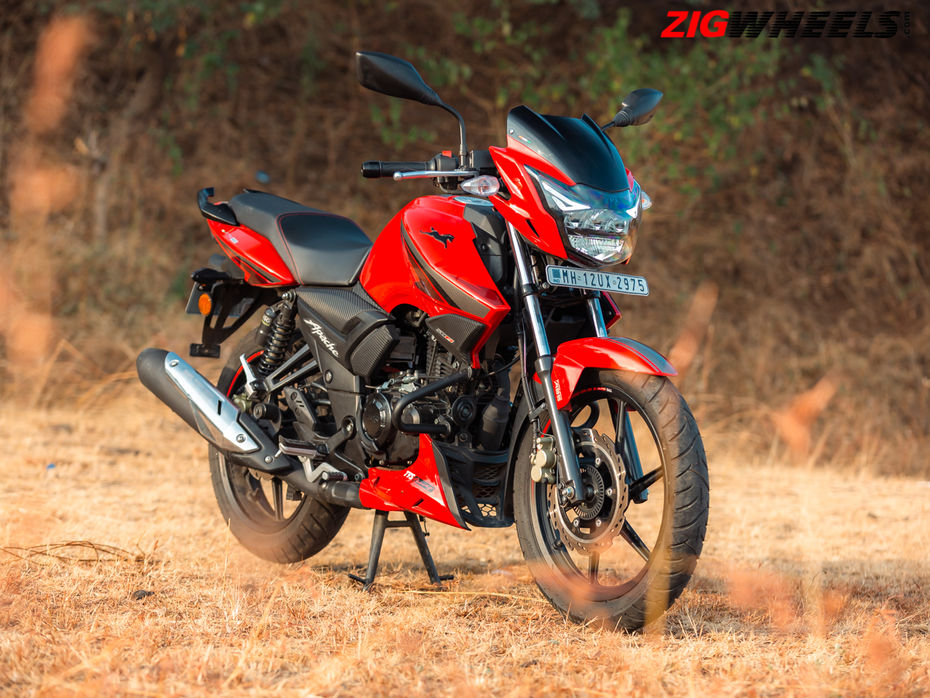
What I love the most about the Apache RTR range of bikes is that the design has evolved over time without compromising the silhouette. And RTR 160 2V is no exception. It’s just as mean, lean and sporty as the first-ever Apache, but period-correct in 2022, at least to my eyes that is. It has LED lighting, Bluetooth connectivity, three riding modes and more. Read our launch story to have a closer look at the motorcycle’s features.
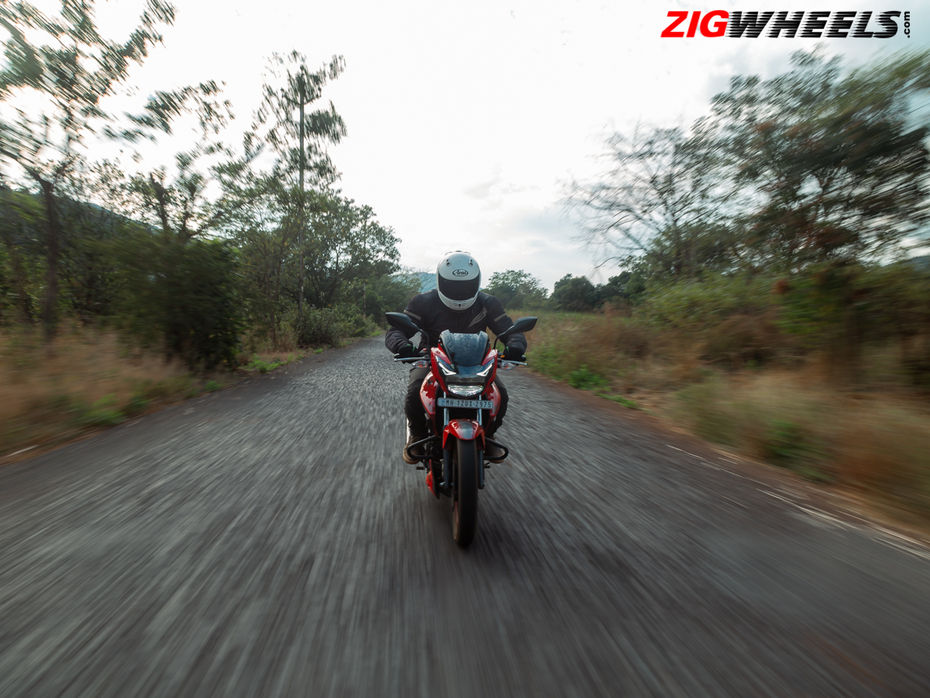
The second thing I love about the RTR 160 2V is its engine. Powered by a 159.7cc heart, this motor is a remnant of what the old Apache’s felt like, which isn’t the case with the new Pulsars as they’ve been reimagined for the future. TVS alternatively kept updating the Apache with time and made it smoother, quieter, more powerful and yet efficient enough for everyday use. You can even lower the power and torque output with the riding modes.
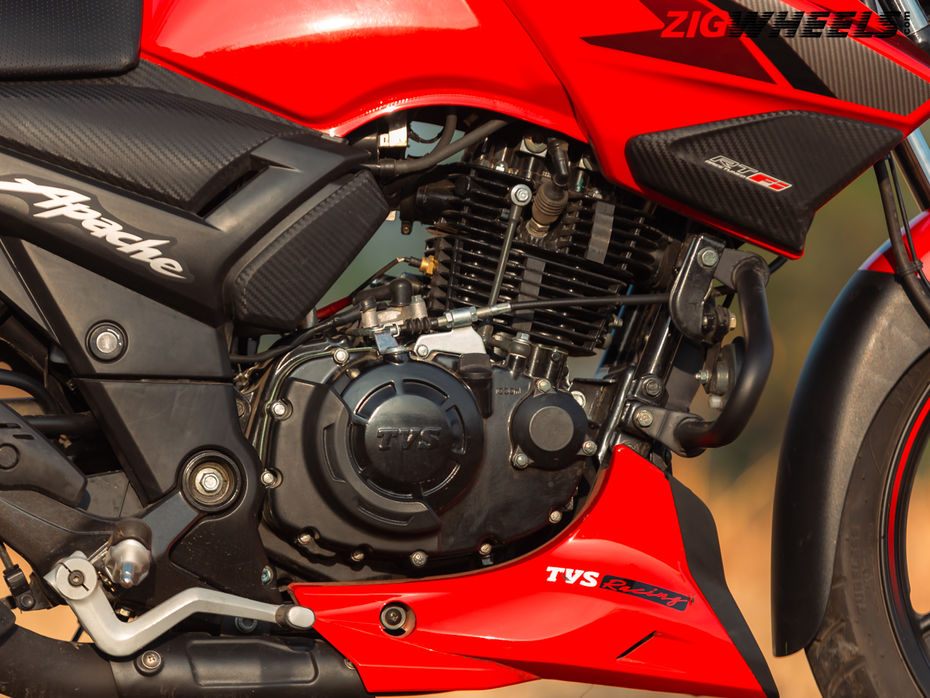
Riding Modes
|
Mode |
Power |
Torque |
|
Sport |
16.04PS at 8750rpm |
13.85Nm at 7000rpm |
|
Urban / Rain |
13.32PS at 8000rpm |
12.7Nm at 6500 rpm |
The option of ‘riding modes’ that actually work and simply not change the colour of the display is cool. Switch between ‘Sport’ and ‘Urban’ and the difference in the bike’s behaviour is very noticeable. The Power and torque in Urban/Rain is considerably reduced and the power build-up beyond 60kmph is noticeably slower.
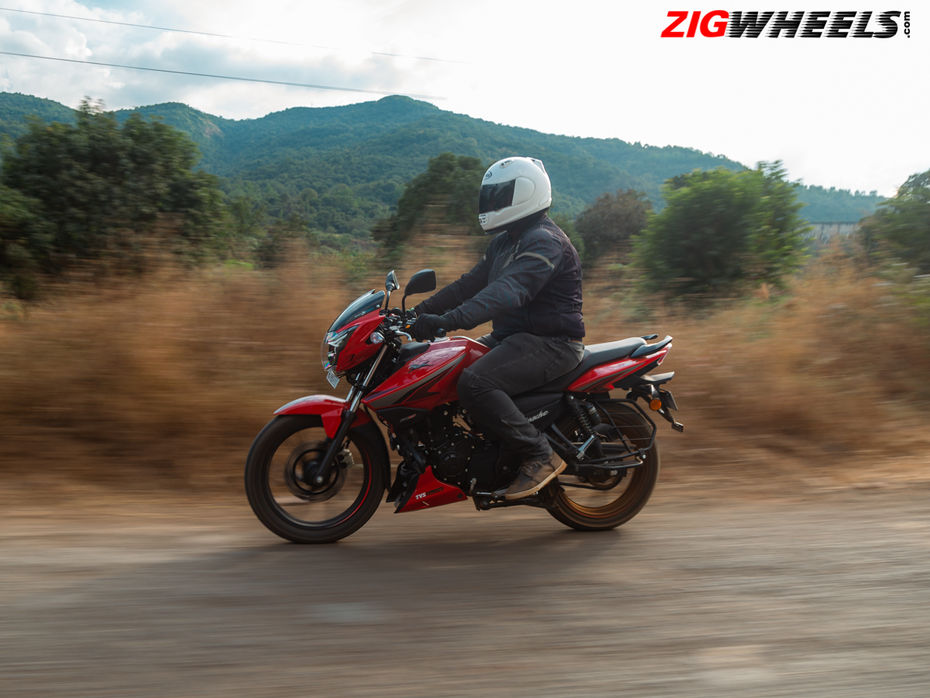
Acceleration test:
|
0-60kmph |
0-80kmph |
0-100kmph |
|
5.10sec (Sport) | 6.03sec (Urban) |
8.97sec (Sport) | 11.67sec (Urban) |
15.73sec (Sport) |
TVS imagined the Apache on the race track and when you open the gas on this tiny 160cc bike, it feels happy to rev its heart out to 9500-10,000rpm like a track bike would. But it’s a small bike, so, while 60kmph comes in quickly, higher speeds tend to take more time to arrive.
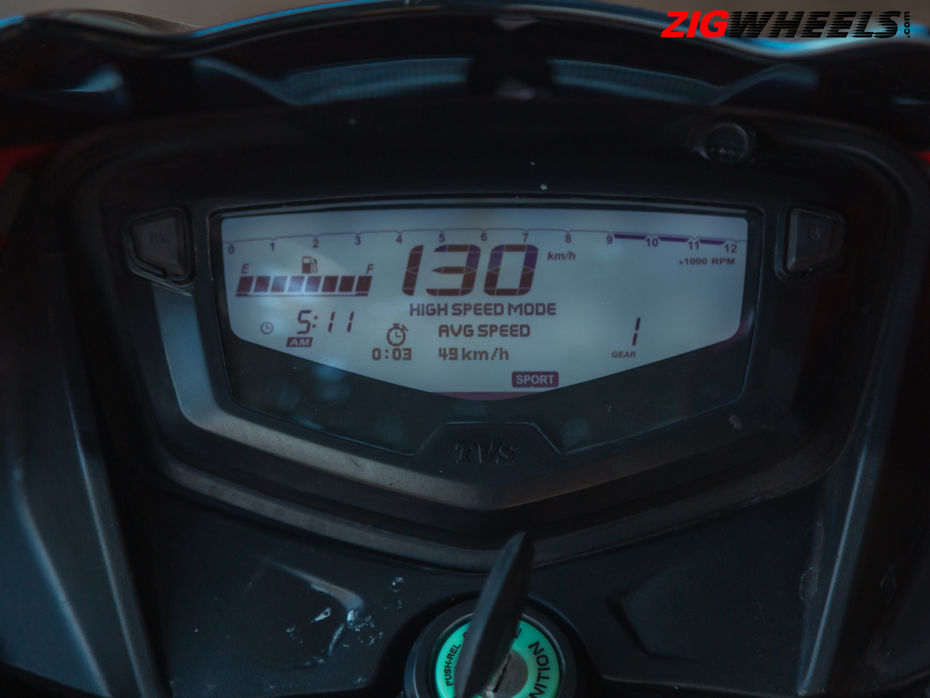
That said, on the highway, holding speeds of 80-90kmph hits the sweet spot on this bike. There’s more top end to be found and even an averagely weighted rider will see an indicated 120kmph given enough road. But, the motor gets way too vibey at that point and becomes annoying. Also note that in Urban and Rain mode, the top speed is capped at around 105kmph (indicated).
Efficiency Test:
|
City |
Highway |
|
45.06kmpl |
46.99kmpl |
Roll-on Acceleration Test:
|
30-70kmph in 3rd gear |
40-80kmph in 4th gear |
|
5.51sec Sport/ 7.03sec Urban |
7.29sec Sport / 9.10sec Urban |
The engine isn’t as tractable across the five-speed gearbox as we’d like, but the bike picks up momentum quickly. Needless to say, things are a bit sluggish outside of Sport mode. The peaky nature of the motor means you end up shuffling between gears often in stop-go traffic.
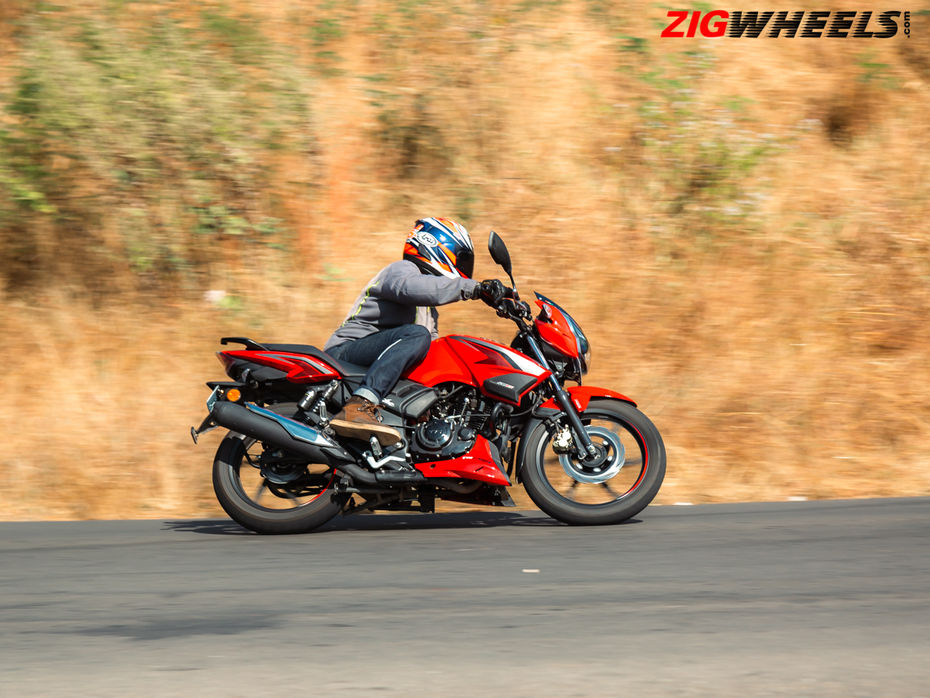
But what helps the Apache the most in the city is its short 1,300mm wheelbase. It makes this bike absurdly nimble and agile and splitting traffic is both effortless and fun. But, it also makes the front end of the bike feel unsettled at higher speeds and over bumpy roads.
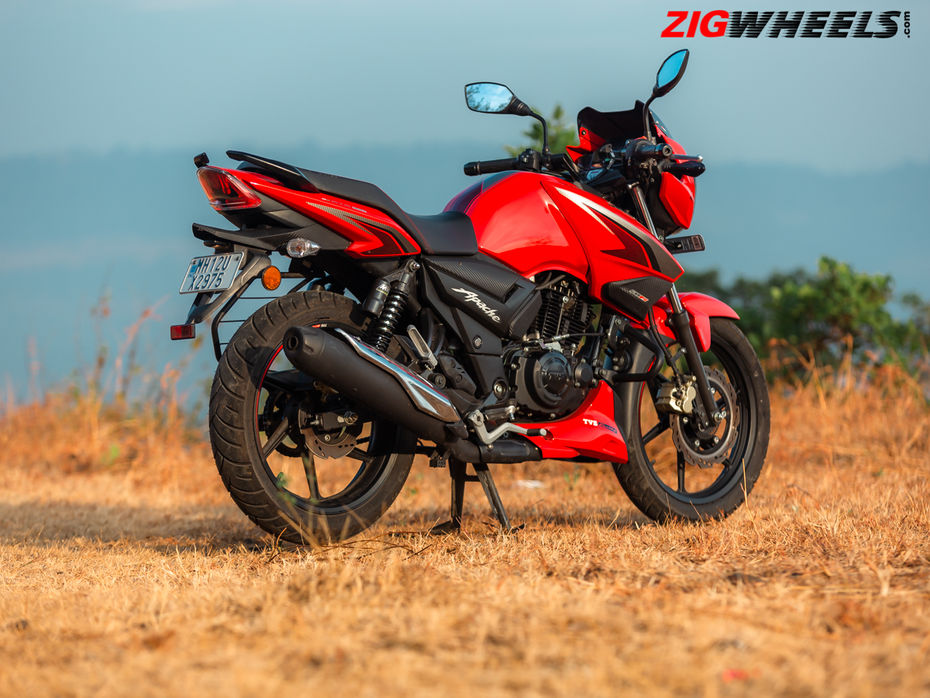
The bike is light. The dual disc variant which we rode is 138kg (kerb). Even the seat height is 790mm tall. But the slimness and compactness of the Apache makes its rider triangle a bit too cramped for riders of average height. But credit where it’s due, it’s a comfortable place to be in, especially over bad roads because the suspension setup – telescopic front and twin coil rear – work so well at absorbing the shocks.
Braking Test:
|
80-0kmph |
60-0kmph |
|
32.81m |
18.69m |
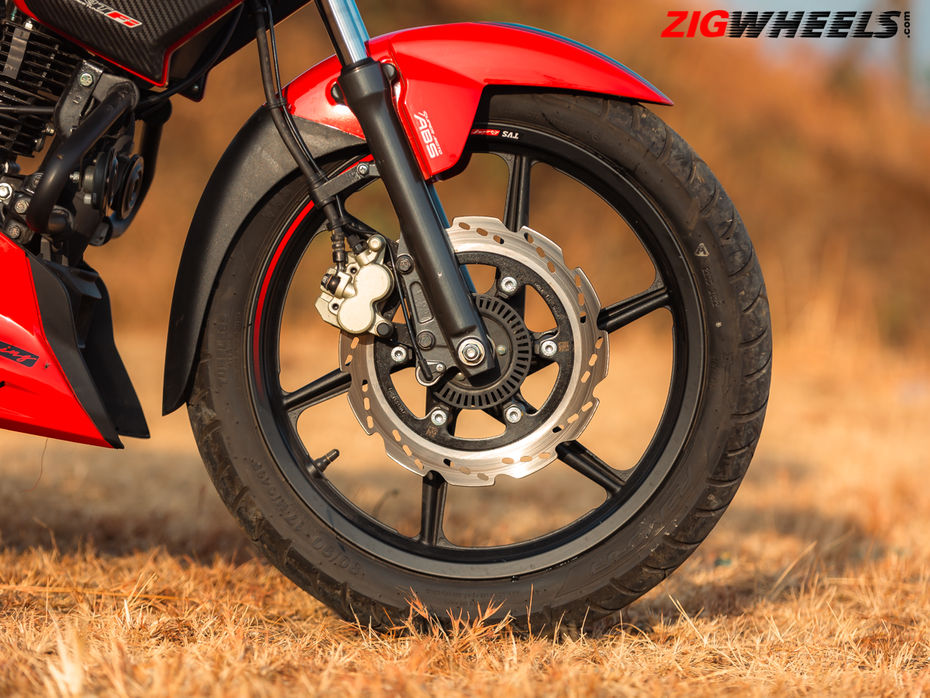
The braking can be summarised as just about average. Under hard-braking, there’s enough bite but very little feedback comes back through. The ABS kicks in and the pushback on the lever becomes bouncy. The TVS Remora tyres do a great job of not throwing the motorcycle out of composure and despite having just single-channel ABS, the bike does not fishtail while anchoring hard.
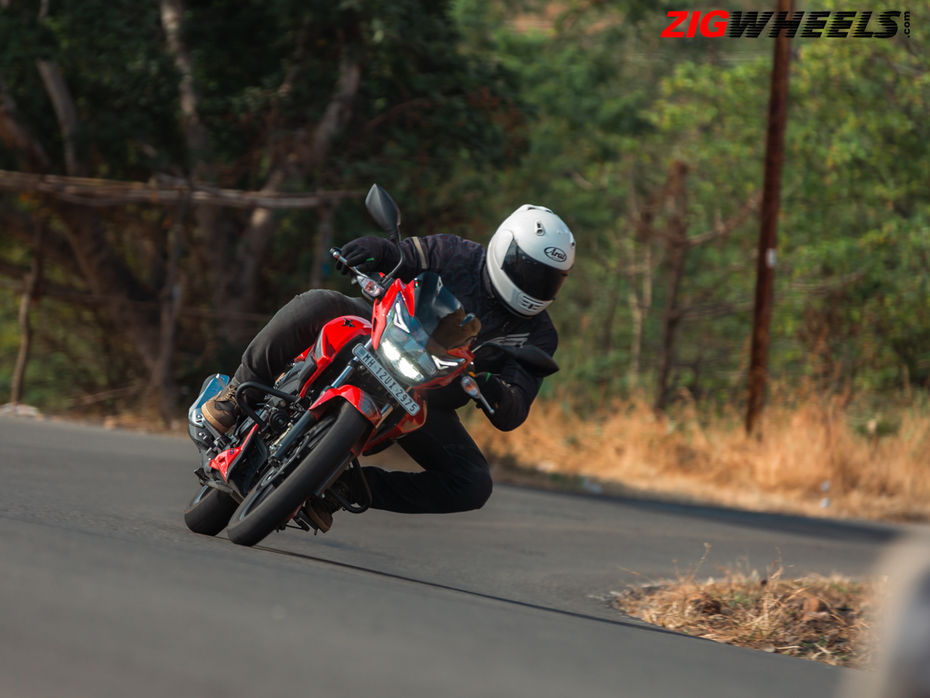
This motorcycle packs a lot of emotion and fun, and most of its shortcomings can be lived with as well. Where it becomes hard to justify this purchase to you is the price. Jehan rightfully pointed it out and at Rs 1,24,590, the top-spec Bluetooth, twin-disc variant we rode is only Rs 4,000 cheaper than a similarly specced Apache RTR 160 4V which costs Rs 1,28,590 (all prices are ex-showroom Delhi). And the 4V variant is an absolute hoot, way more refined, more modern and is the most obvious RTR 160 to buy in 2022.
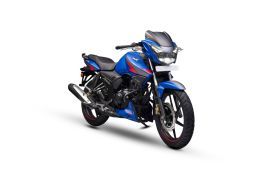

TVS Apache RTR 160 4V vs Bajaj Pulsar N160 Real-world Comparison...

TVS Apache RTR 165 RP Review: Not Completely Race-ready

Royal Enfield Hunter 350: First Ride: Catch ‘em Young

The Royal Enfield Hunter 350 Heads To Rider Mania

Royal Enfield Hunter 350 Retro vs Metro Comparison: Which One Is The...

Motomax Insta Shine Review: Can It Really Bring A Shine To Your Bike?

Yamaha MT-15 V2 vs TVS Apache RTR 200 4V Comparison Road Test: A...

Yamaha MT-15 Version 2.0 Road Test Review - The Perfect Imperfection

Pulsar P150 vs Apache RTR 160 2V - Comparison Review
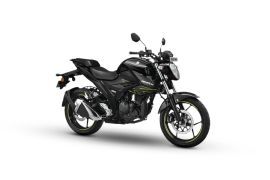 Suzuki Gixxer 150
Suzuki Gixxer 150
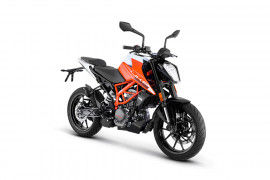 KTM 125 Duke
KTM 125 Duke
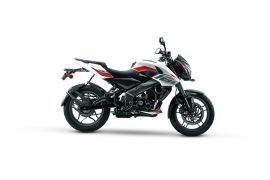 Bajaj Pulsar NS160
Bajaj Pulsar NS160
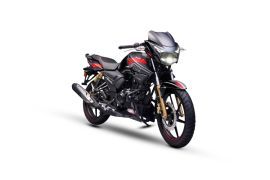 TVS Apache RTR 180
TVS Apache RTR 180
 TVS Apache RTR 160 4V
TVS Apache RTR 160 4V
India's largest automotive community